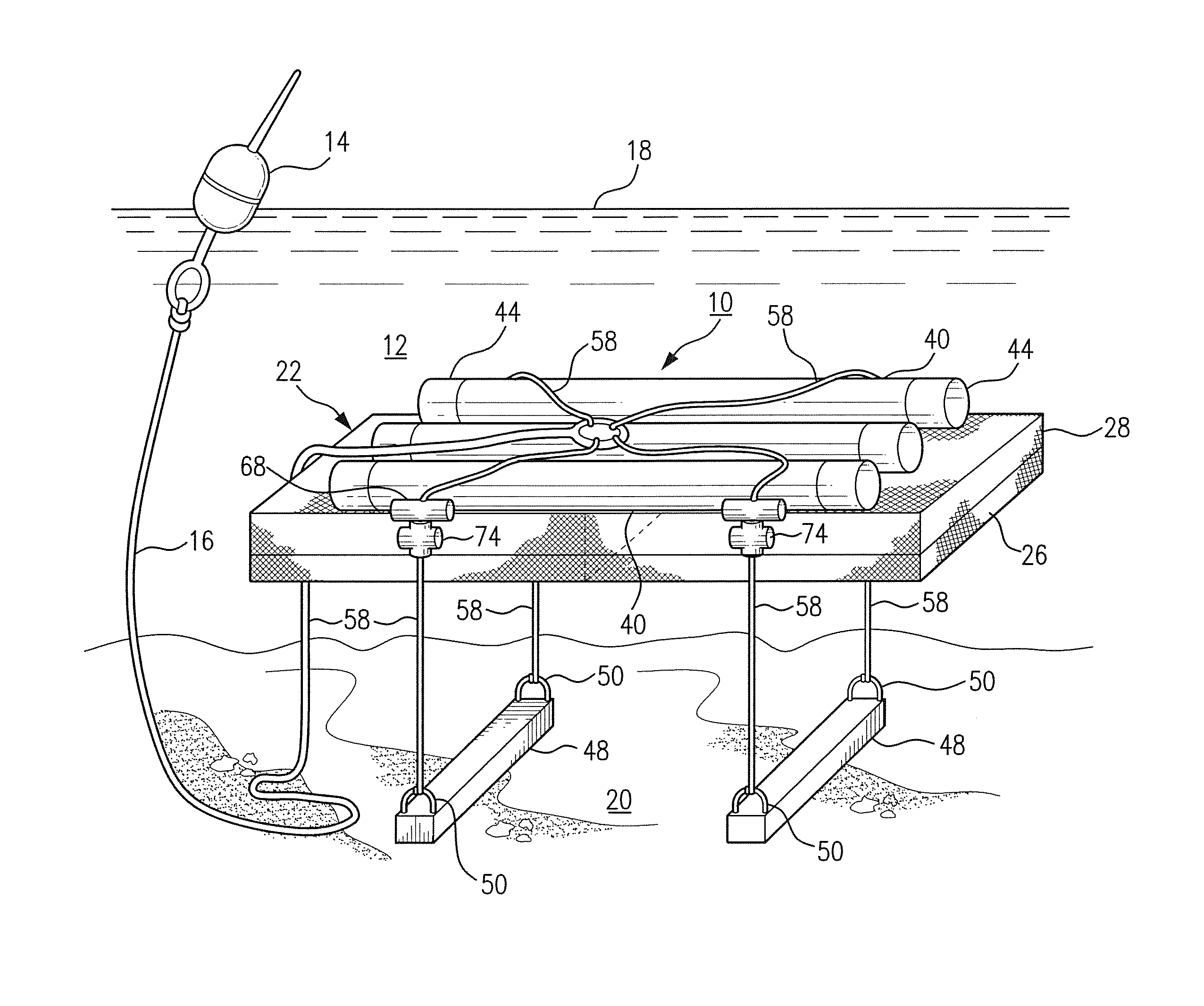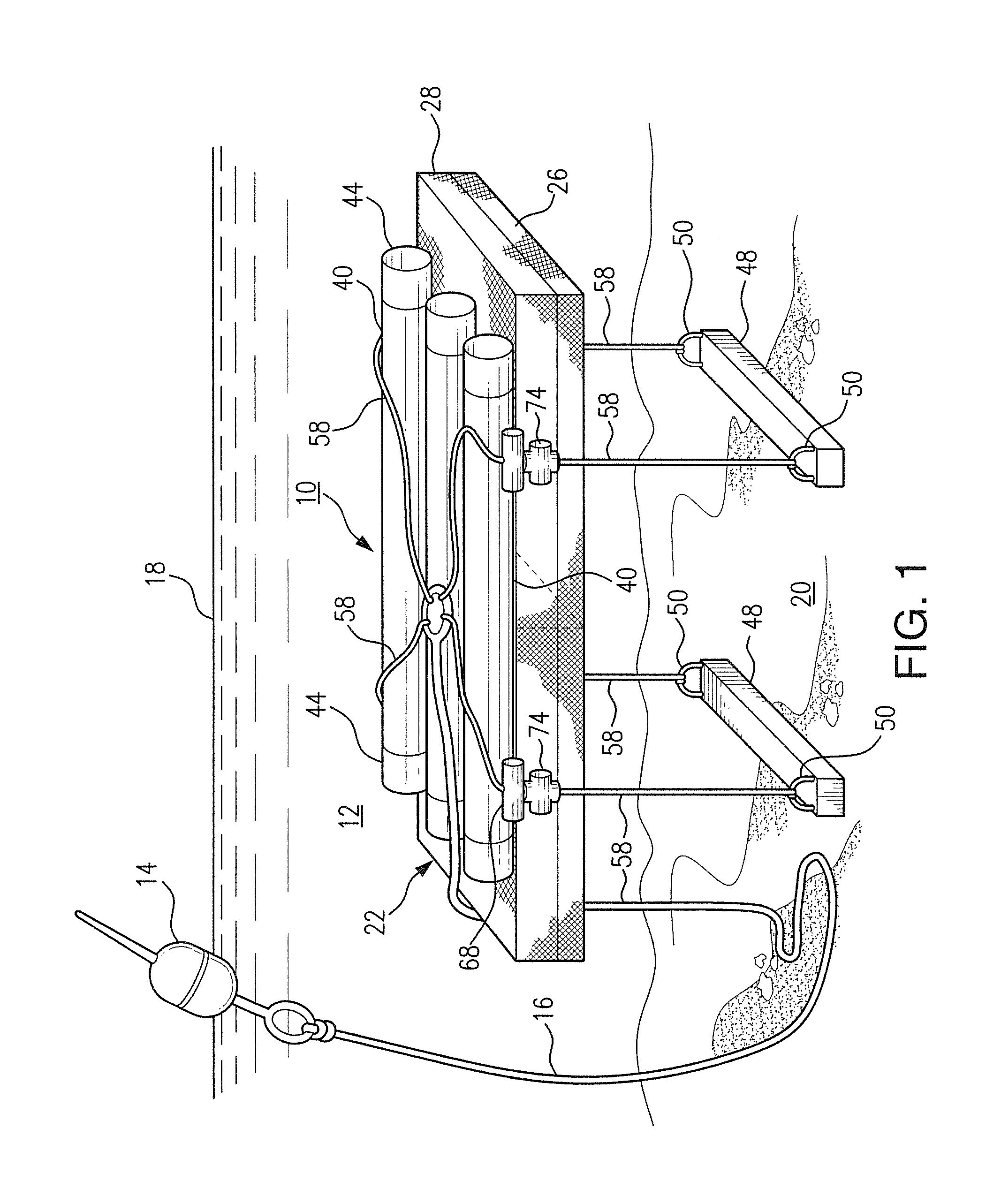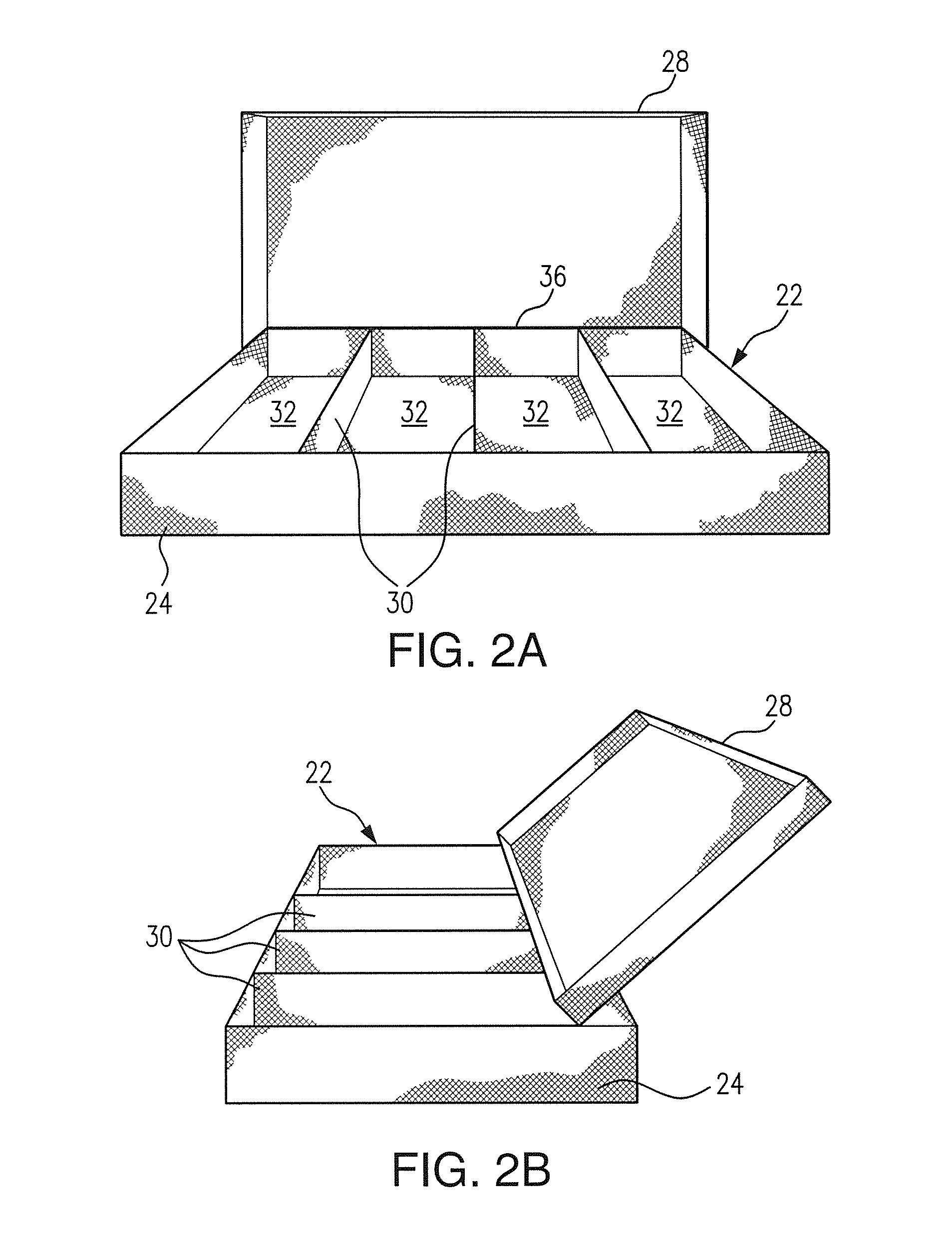Molluscan bivalve cage system
a cage system and bivalves technology, applied in pisciculture, aquaria, climate change adaptation, etc., can solve the problems of not providing for both positive and negative buoyancy systems in prior art systems, not providing for any positive buoyancy mechanism attached to the upper surface of the crib, and not providing for adjustment of depth in prior art systems. achieve positive buoyancy to the cage, reduce the risk of extinction, and ensure the effect of survival
- Summary
- Abstract
- Description
- Claims
- Application Information
AI Technical Summary
Benefits of technology
Problems solved by technology
Method used
Image
Examples
Embodiment Construction
[0037]Referring now to FIG. 1, there is shown molluscan bivalve cage system 10 for maintaining a molluscan bivalve cage 22 within marine environment 12 and positioned at an adjustable and predetermined height above sea bed 20. A buoy 14 is connected or otherwise tethered to molluscan bivalve cage 22 through buoy line 16, as shown in FIG. 1. Buoy 14 floats on water surface 18 to provide indication of a general location of molluscan bivalve cage system 10 located beneath the water surface 18.
[0038]In overall concept, molluscan bivalve cage system 10 allows for natural propagation or spawning of oysters or other molluscan bivalve species within a predetermined depth in a water column in molluscan bivalve cage 22 which acts as a point source by using predominant tides and currents and natural settlement in open ocean, open bay, river, and creek mouths, over-productive oyster reefs and depleted oyster reefs, as well as in areas where oyster introduction and growth is desired.
[0039]Mollus...
PUM
 Login to View More
Login to View More Abstract
Description
Claims
Application Information
 Login to View More
Login to View More - R&D
- Intellectual Property
- Life Sciences
- Materials
- Tech Scout
- Unparalleled Data Quality
- Higher Quality Content
- 60% Fewer Hallucinations
Browse by: Latest US Patents, China's latest patents, Technical Efficacy Thesaurus, Application Domain, Technology Topic, Popular Technical Reports.
© 2025 PatSnap. All rights reserved.Legal|Privacy policy|Modern Slavery Act Transparency Statement|Sitemap|About US| Contact US: help@patsnap.com



